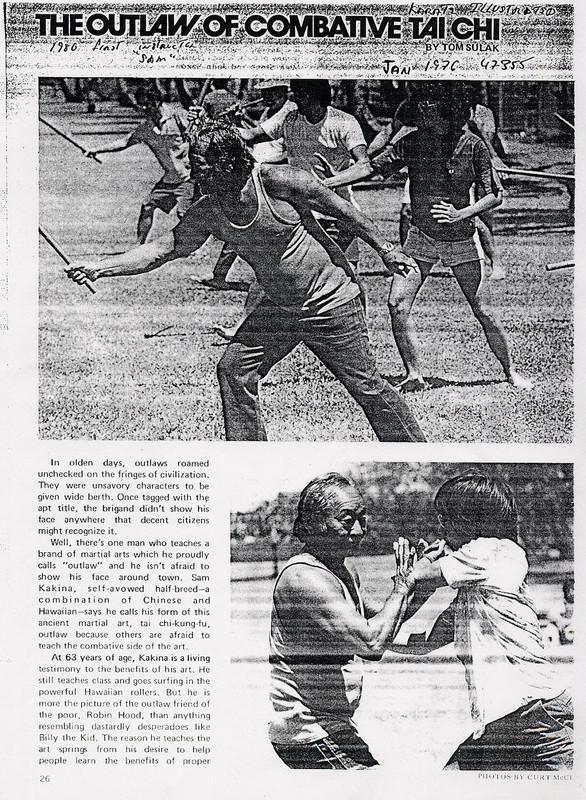I've looked back through your posts and I'm not seeing it. Maybe my eyes are getting old. Can you point out the post where you explain what sort of injuries you're getting 3-4 times per week? Or else just go ahead and explain again?
Yep. Admittedly I do a lot more grappling than striking sparring these days and I don't do as much hard-contact striking sparring as I used to, preferring to keep things more light and technical. I'm old and asthmatic and don't have the cardio for it anymore. But even when back when I was younger and prepping for a fight I didn't get injured every week or anything close to it.
Leaving aside mild bumps, bruises, and muscle soreness (which I wouldn't categorize as injuries) here's the list of injuries I can recall at the moment that I've compiled over my years of training:
- Two broken fingers and a badly broken thumb which required surgery. (3 separate occasions, not all at once)
- A broken wrist
- Probably 3 mild concussions. Not officially diagnosed, but getting TKO'd once in the ring and twice in sparring should count.
- A couple of cut tendons in my hand requiring surgery from an accident in sword practice
- A thigh so badly bruised that I couldn't bend my leg or support weight on that leg until the next day.
- Twice getting my thumb whacked so hard in HEMA sparring that I lost my thumbnail and had to wait for it to grow back.
- Twice getting cuts on my forehead that required stitches.
- Once getting poked in the eye that resulted in seeing flashing rings of light at nighttime for about six months. (I got poked in the eye a couple of other times and it really hurt, but there were no aftereffects and I was back to normal in a few minutes, so I won't call those injuries.)
- A dislocated shoulder from a Judo tournament
- The occasional mild strain that feels better after a couple of days
There might be more, but that's what I can remember right now. That's over the course of 44 years of martial arts training including 26 years of combat sports. It comes out to less than an injury per year.
Of course, I'm not any kind of hardcore professional fighter. But I have friends, coaches, and training partners who are current or former hardcore professional fighters and none of them get consistently injured on a weekly basis. Some of them have taken some serious damage over the course of their fight careers, but none of them ever got injured on a consistent weekly basis.
It's a figure of speech. I've never made a living from martial arts. I also said "martial arts career", not "fight career" because I haven't had enough fights to call that a career even figuratively. But for the record, here's what I've done in competition:
A bunch of heavy weapon tournaments in the Society for Creative Anachronism. (Hard contact with heavy sticks and armor) I got to the point of being an above average competitor, but was never good enough to win a tournament. My best showing was 4th place one time.
A couple of amateur Bando/Muay Thai fights. 1-1, both the win and loss by TKO. I was 37 at the time. After that I had some health issues for a while and then got to an age where full contact competition wasn't for me anymore.
A handful of BJJ and Judo tournaments. In my late thirties I managed one gold and one silver in BJJ and the same in Judo. Never medaled once I got into my 40s and the last tournament match I won in BJJ was around age 48. I haven't competed in BJJ since I turned 50, because there's no one in my rank and age bracket and I don't need to pay $100 to compete against black belts who are half my age.
In my 50s I did a handful of HEMA and amateur Sumo tournaments. I've won less than a third of my Sumo matches in tournaments, so no medals there. But since the other competitors are typically half my age, I don't mind so much. In HEMA I've done a little better. The only tournament I've won was an in-house tournament. In open tournaments, the best I've done is end up in the top 25% of competitors.
I haven't competed yet in my 60s, but I'm planning on doing some more HEMA competitions. The cardio demands are much less than for BJJ, age doesn't play such a major role, and the tournament fees are cheaper.
Oh, and in my 20s I had some non-sportive fist fights when I was working retail and had the bad judgment to chase after shoplifters who would run out with a case of beer. Those fights were much easier than any of my competitions. I was just lucky that I never got shot or got in legal trouble.
I have no problem with that statement. I prefer the heavy bag myself and I certainly don't think the makiwara is a necessary tool. But your quote that I was responding to said:
I was just pointing out a high-level modern professional fighter who does think that it has value. I'm sure Thompson wouldn't suggest that everyone has to use the makiwara. But he does argue that it has value. He also advocates for doing at least some bag work with bare knuckles rather than fully wrapped and gloved, which relates to the original topic of this thread. (I don't believe he does all his training that way. Just some of it.)


